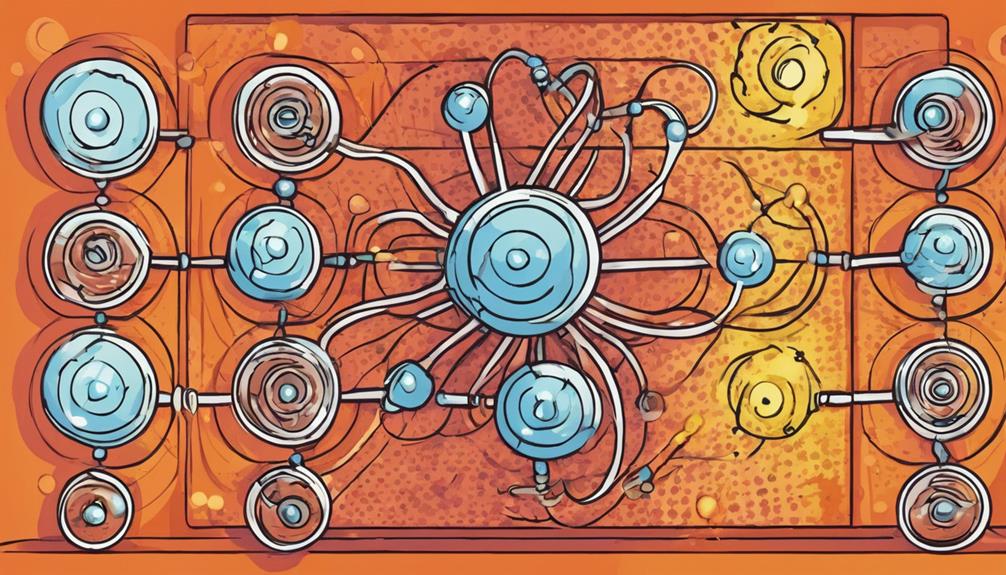Ionization energy is the energy needed to remove an electron from a gaseous atom, measured in joules or electron volts. It's essential for understanding chemical reactivity and how elements behave. Factors like distance to the nucleus and electron configuration affect it. Elements that have high ionization energy are less likely to form compounds easily. As you explore further, you'll discover how ionization energy impacts elements' interactions and compound stability.
Key Takeaways
- Ionization energy is the energy required to remove an electron from a gaseous atom.
- It influences chemical reactivity and compound properties.
- Factors affecting ionization energy include nucleus charge, atom size, and electron configuration.
- Periodic trends show increasing ionization energy across periods and decreasing down groups.
- Understanding ionization energy helps predict reactivity, bond types, and compound stability.
Definition and Measurement
Ionization energy is typically measured in joules or electron volts in an electric discharge tube. It represents the energy required to remove an electron from a gaseous atom.
The first ionization energy pertains to the energy needed to remove the first electron from an atom. This concept is pivotal in understanding chemical reactivity and how it affects the properties of elements and compounds.
The ionization energy is influenced by factors such as the distance between the electron and nucleus, the charge of the nucleus, and the electron configuration.
As you move across a period in the periodic table from left to right, the ionization energy generally increases due to the increasing atomic number. This trend is attributed to the stronger pull of the nucleus on the electrons as the atomic number rises.
Understanding these Periodic Trends in ionization energy is fundamental in comprehending the behavior and characteristics of elements in chemistry.
Factors Affecting Ionization Energy
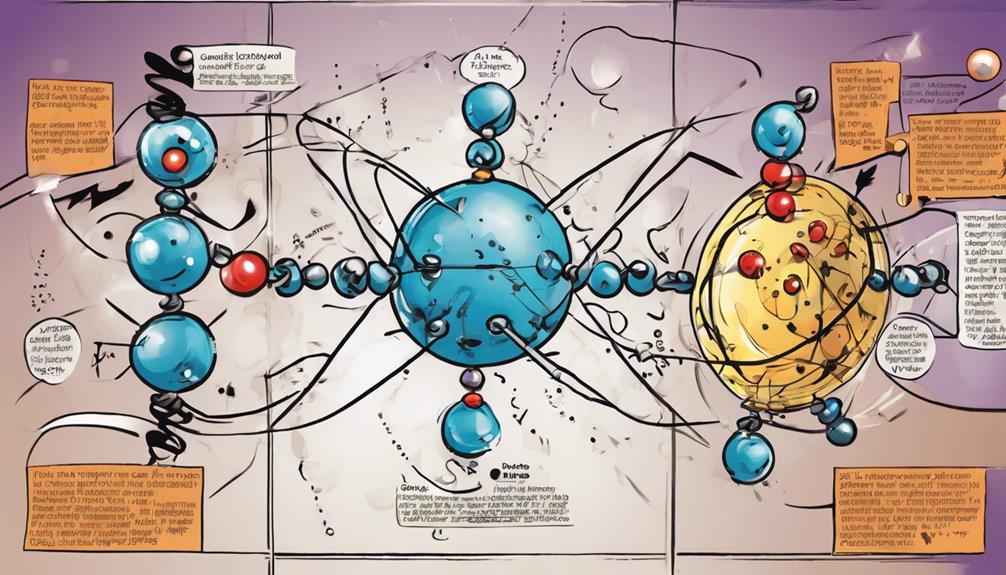
When considering factors affecting ionization energy, the electric charge of the nucleus and the size of the atom play significant roles.
Noble gases, such as helium and neon, exhibit high ionization energy due to their stable electronic configuration, making them less likely to lose electrons.
On the other hand, alkali metals like sodium and potassium have low ionization energy, which renders them highly reactive as they easily lose electrons to achieve stability.
The size of the atom also influences ionization energy, with larger atoms requiring less energy to remove an electron compared to smaller atoms.
Additionally, the shielding effect plays a pivotal role in ionization energy. Within a group in the periodic table, the shielding effect decreases ionization energy from top to bottom.
Ionization energy is measured in joules or electron volts and is essential for understanding the chemical reactivity of elements, as it determines how easily an atom can gain or lose electrons to form compounds.
Periodic Trends and Variations
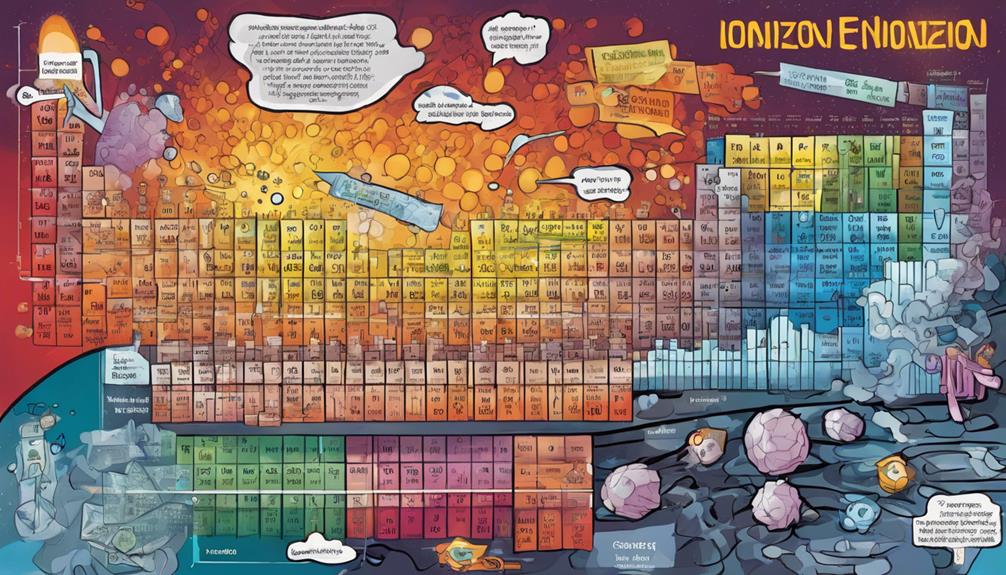
Ever wondered how elements exhibit varying trends in their ionization energy as you move across and down the periodic table?
Ionization energy, the energy required to remove an electron from an atom in its gaseous state, follows distinct patterns on the periodic table.
As you move from left to right within a period, ionization energy generally increases due to the increasing nuclear charge, which enhances the Coulombic attraction between the positively charged nucleus and negatively charged electrons.
Conversely, as you move down a group, ionization energy tends to decrease because of the shielding effect caused by additional electron shells. This shielding effect reduces the effective nuclear charge experienced by the outermost electrons, making them easier to remove.
These periodic trends in ionization energy are essential for understanding the behavior of elements and can be used to predict values for elements beyond atomic number 104.
Importance in Chemical Bonding
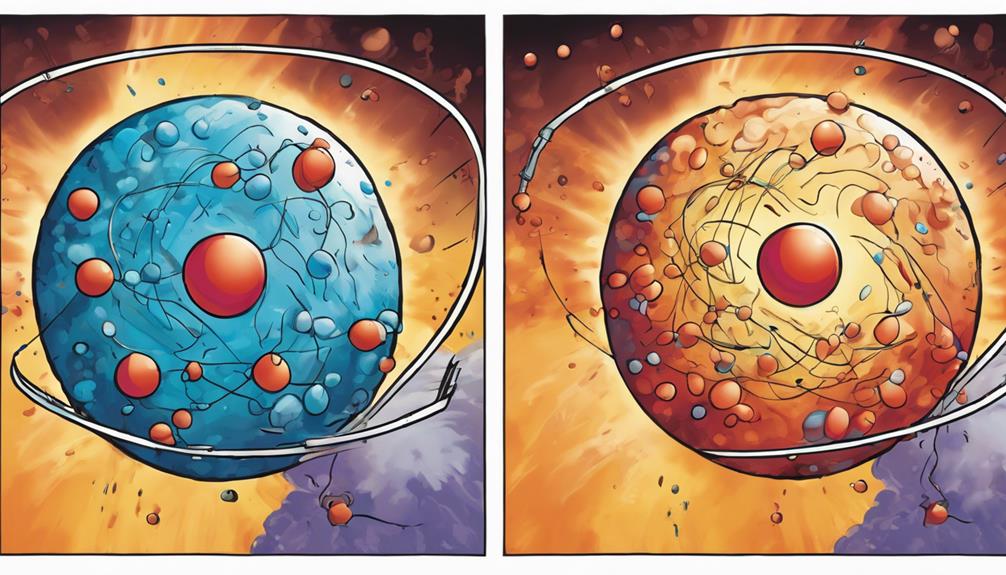
Understanding the significance of ionization energy in chemical bonding is fundamental for comprehending the behavior of elements in various reactions. Ionization energy, which is influenced by factors like atomic radius, nuclear charge, and electron configuration, plays a pivotal role in determining how elements interact with one another to form compounds.
Elements with low ionization energies tend to readily lose electrons to achieve a stable electron configuration, leading to the formation of ionic bonds. On the other hand, elements with high ionization energies are more likely to share electrons through covalent bonds to attain stability.
The differences in ionization energies between elements also contribute to the formation of polar covalent bonds, where electrons are shared unequally. By understanding these relationships, scientists can predict the type of chemical bonds that elements will form and anticipate the reactivity and stability of compounds in various chemical reactions.
Predictions and Applications
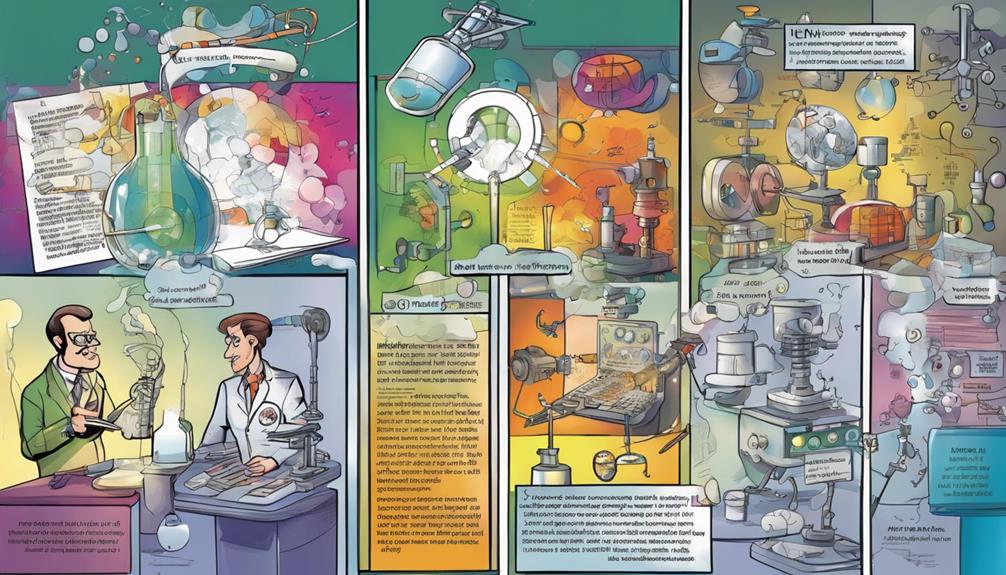
To apply the knowledge of ionization energy effectively, consider making predictions about elements' reactivity and exploring practical applications in chemical reactions. Understanding the concept of first ionization energy and electronic configurations can provide insights into the periodic trends of elements. For instance, elements in the same group generally exhibit similar first ionization energy values, impacting their reactivity and bond types formed in compounds. Analyzing the succeeding ionization energies can also shed light on the chemical behavior of elements and their ability to form ions.
Here is a table summarizing the key aspects related to ionization energy predictions and applications:
| Aspects | Examples |
|---|---|
| Periodic trends | Group with the lowest first ionization energy |
| Bond type determination | Sulfur's first ionization energy value |
| Chemical behavior | Analysis of succeeding ionization energies |
| Formation of ions | Influence on ion formation and chemical bonding |
| Reactivity in compounds | Impact on elements' reactivity in chemical compounds |
Frequently Asked Questions
What Is the Simple Definition of Ionization Energy?
To put it simply, ionization energy is the energy needed to remove an electron from an atom or molecule. It's essential in chemistry for understanding reactivity and bonding. Factors like nucleus charge and electron configuration influence it.
What Is Ionization in Simple Terms?
When you talk about ionization in simple terms, it's all about stripping an atom or molecule of an electron. This process requires a specific amount of energy, known as ionization energy, to make it happen.
What Is the Ionization Energy for Dummies?
When it comes to ionization energy for dummies, understanding it is like a membership fee for electrons to leave their atom club. The more attraction from the nucleus, the higher the fee.
Which Best Describes Ionization Energy?
So, which best describes ionization energy? It's the energy needed to remove an electron from an atom. Factors like nucleus charge and atom size affect it. Understanding this helps predict reactivity and bonding.
Can Ionization Energy Be Converted to Kinetic Energy?
The process of converting kinetic energy to thermal occurs when ionization energy is released as an atom loses an electron. This release of energy can result in the atoms gaining kinetic energy, thus increasing their overall temperature. However, the conversion of ionization energy to kinetic energy is not a direct transformation.
How Does Ionization Energy Affect the Efficiency of Power Plants and Wind Turbines?
The ionization energy plays a crucial role in determining the efficiency of both wind turbines and power plants. In the case of wind turbines, a lower ionization energy allows for easier extraction of electrons from the wind, leading to higher energy production. Similarly, power plants benefit from lower ionization energies for increased efficiency in electricity generation. Comparing wind turbine vs power plant, understanding the impact of ionization energy is key to optimizing their performance.
Conclusion
Now that you understand ionization energy, you can think of it as the superhero cape that helps elements fight off electrons. Just like a shield protecting a warrior, ionization energy determines an element's ability to lose electrons and form bonds.
Keep in mind the factors that influence this energy and how it impacts chemical reactions. With this knowledge, you'll be able to predict how elements will interact and create amazing applications in the world of chemistry.
